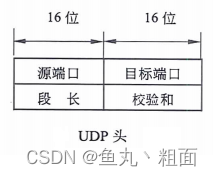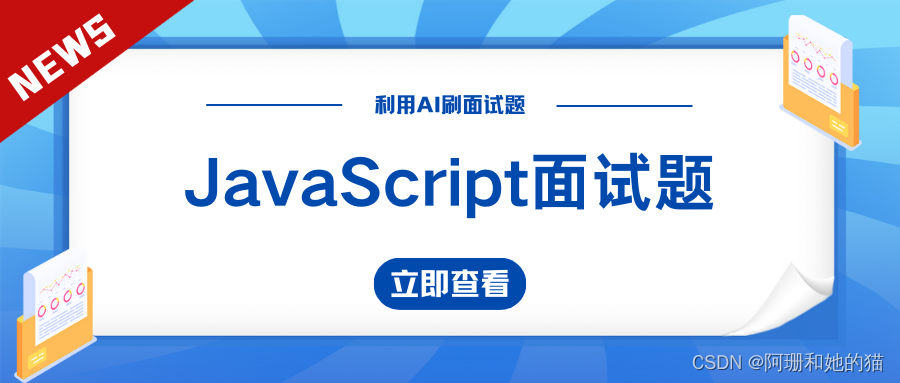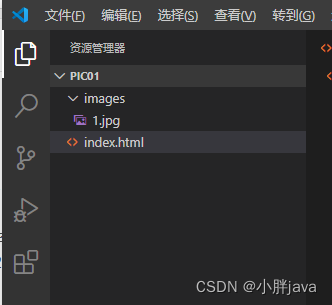第一章 Date类
1.1 Date概述
java.util.Date类 表示特定的瞬间,精确到毫秒。
继续查阅Date类的描述,发现Date拥有多个构造函数,只是部分已经过时,我们重点看以下两个构造函数
public Date():从运行程序的此时此刻到时间原点经历的毫秒值,转换成Date对象,分配Date对象并初始化此对象,以表示分配它的时间(精确到毫秒)。public Date(long date):将指定参数的毫秒值date,转换成Date对象,分配Date对象并初始化此对象,以表示自从标准基准时间(称为“历元(epoch)”,即1970年1月1日00:00:00 GMT)以来的指定毫秒数。
tips: 由于中国处于东八区(GMT+08:00)是比世界协调时间/格林尼治时间(GMT)快8小时的时区,当格林尼治标准时间为0:00时,东八区的标准时间为08:00。
简单来说:使用无参构造,可以自动设置当前系统时间的毫秒时刻;指定long类型的构造参数,可以自定义毫秒时刻。例如:
package com.iflytek.day17;import java.util.Date;public class DateDemo01 {public static void main(String[] args) {// 创建日期对象,把当前的时间System.out.println(new Date()); // Tue Jan 16 14:37:35 CST 2020// 创建日期对象,把当前的毫秒值转成日期对象System.out.println(new Date(0L)); // Thu Jan 01 08:00:00 CST 1970}
}
tips:在使用println方法时,会自动调用Date类中的toString方法。Date类对Object类中的toString方法进行了覆盖重写,所以结果为指定格式的字符串。
1.2 Date常用方法
Date类中的多数方法已经过时,常用的方法有:
public long getTime()把日期对象转换成对应的时间毫秒值。public void setTime(long time)把方法参数给定的毫秒值设置给日期对象
示例代码
package com.iflytek.day17;import java.util.Date;public class DateDemo02 {public static void main(String[] args) {//创建日期对象Date d = new Date();//public long getTime():获取的是日期对象从1970年1月1日 00:00:00到现在的毫秒值//System.out.println(d.getTime());//System.out.println(d.getTime() * 1.0 / 1000 / 60 / 60 / 24 / 365 + "年");//public void setTime(long time):设置时间,给的是毫秒值//long time = 1000*60*60;long time = System.currentTimeMillis();d.setTime(time);System.out.println(d);}
}
小结:Date表示特定的时间瞬间,我们可以使用Date对象对时间进行操作。
第二章 SimpleDateFormat类
java.text.SimpleDateFormat 是日期/时间格式化类,我们通过这个类可以帮我们完成日期和文本之间的转换,也就是可以在Date对象与String对象之间进行来回转换。
- 格式化:按照指定的格式,把Date对象转换为String对象。
- 解析:按照指定的格式,把String对象转换为Date对象。
2.1 构造方法
由于DateFormat为抽象类,不能直接使用,所以需要常用的子类java.text.SimpleDateFormat。这个类需要一个模式(格式)来指定格式化或解析的标准。构造方法为:
public SimpleDateFormat(String pattern):用给定的模式和默认语言环境的日期格式符号构造SimpleDateFormat。参数pattern是一个字符串,代表日期时间的自定义格式。
2.2 格式规则
常用的格式规则为:
| 标识字母(区分大小写) | 含义 |
|---|---|
| y | 年 |
| M | 月 |
| d | 日 |
| H | 时 |
| m | 分 |
| s | 秒 |
备注:更详细的格式规则,可以参考SimpleDateFormat类的API文档。
2.3 常用方法
DateFormat类的常用方法有:
-
public String format(Date date):将Date对象格式化为字符串。 -
public Date parse(String source):将字符串解析为Date对象。package com.itheima.a01jdk7datedemo;import java.text.ParseException; import java.text.SimpleDateFormat; import java.util.Date;public class SimpleDateFormatDemo01 {public static void main(String[] args) throws ParseException {/*public simpleDateFormat() 默认格式public simpleDateFormat(String pattern) 指定格式public final string format(Date date) 格式化(日期对象 ->字符串)public Date parse(string source) 解析(字符串 ->日期对象)*///1.定义一个字符串表示时间String str = "2023-11-11 11:11:11";//2.利用空参构造创建simpleDateFormat对象// 细节://创建对象的格式要跟字符串的格式完全一致SimpleDateFormat sdf = new SimpleDateFormat("yyyy-MM-dd HH:mm:ss");Date date = sdf.parse(str);//3.打印结果System.out.println(date.getTime());//1699672271000}private static void method1() {//1.利用空参构造创建simpleDateFormat对象,默认格式SimpleDateFormat sdf1 = new SimpleDateFormat();Date d1 = new Date(0L);String str1 = sdf1.format(d1);System.out.println(str1);//1970/1/1 上午8:00//2.利用带参构造创建simpleDateFormat对象,指定格式SimpleDateFormat sdf2 = new SimpleDateFormat("yyyy年MM月dd日HH:mm:ss");String str2 = sdf2.format(d1);System.out.println(str2);//1970年01月01日 08:00:00//课堂练习:yyyy年MM月dd日 时:分:秒 星期} }
小结:DateFormat可以将Date对象和字符串相互转换。
第三章 Calendar类
3.1 概述
- java.util.Calendar类表示一个“日历类”,可以进行日期运算。它是一个抽象类,不能创建对象,我们可以使用它的子类:java.util.GregorianCalendar类。
- 有两种方式可以获取GregorianCalendar对象:
- 直接创建GregorianCalendar对象;
- 通过Calendar的静态方法getInstance()方法获取GregorianCalendar对象
3.2 常用方法
| 方法名 | 说明 |
|---|---|
| public static Calendar getInstance() | 获取一个它的子类GregorianCalendar对象。 |
| public int get(int field) | 获取某个字段的值。field参数表示获取哪个字段的值, 可以使用Calender中定义的常量来表示: Calendar.YEAR : 年 Calendar.MONTH :月 Calendar.DAY_OF_MONTH:月中的日期 Calendar.HOUR:小时 Calendar.MINUTE:分钟 Calendar.SECOND:秒 Calendar.DAY_OF_WEEK:星期 |
| public void set(int field,int value) | 设置某个字段的值 |
| public void add(int field,int amount) | 为某个字段增加/减少指定的值 |
3.3 get方法示例
public class CalendarDemo01 {public static void main(String[] args) {//1.获取一个GregorianCalendar对象Calendar instance = Calendar.getInstance();//获取子类对象//2.打印子类对象System.out.println(instance);//3.获取属性int year = instance.get(Calendar.YEAR);int month = instance.get(Calendar.MONTH) + 1;//Calendar的月份值是0-11int day = instance.get(Calendar.DAY_OF_MONTH);int hour = instance.get(Calendar.HOUR);int minute = instance.get(Calendar.MINUTE);int second = instance.get(Calendar.SECOND);int week = instance.get(Calendar.DAY_OF_WEEK);//返回值范围:1--7,分别表示:"星期日","星期一","星期二",...,"星期六"System.out.println(year + "年" + month + "月" + day + "日" + hour + ":" + minute + ":" + second);System.out.println(getWeek(week));}//查表法,查询星期几public static String getWeek(int w) {//w = 1 --- 7//做一个表(数组)String[] weekArray = {"星期日", "星期一", "星期二", "星期三", "星期四", "星期五", "星期六"};// 索引 [0] [1] [2] [3] [4] [5] [6]//查表return weekArray[w - 1];}
}3.4 set方法示例:
public class CalendarDemo02 {public static void main(String[] args) {//设置属性——set(int field,int value):Calendar c1 = Calendar.getInstance();//获取当前日期//计算班长出生那天是星期几(假如班长出生日期为:1998年3月18日)c1.set(Calendar.YEAR, 1998);c1.set(Calendar.MONTH, 3 - 1);//转换为Calendar内部的月份值c1.set(Calendar.DAY_OF_MONTH, 18);int w = c1.get(Calendar.DAY_OF_WEEK);System.out.println("班长出生那天是:" + getWeek(w));}//查表法,查询星期几public static String getWeek(int w) {//w = 1 --- 7//做一个表(数组)String[] weekArray = {"星期日", "星期一", "星期二", "星期三", "星期四", "星期五", "星期六"};// 索引 [0] [1] [2] [3] [4] [5] [6]//查表return weekArray[w - 1];}
}
3.5 add方法示例:
public class CalendarDemo03 {public static void main(String[] args) {//计算200天以后是哪年哪月哪日,星期几?Calendar c2 = Calendar.getInstance();//获取当前日期c2.add(Calendar.DAY_OF_MONTH, 200);//日期加200int y = c2.get(Calendar.YEAR);int m = c2.get(Calendar.MONTH) + 1;//转换为实际的月份int d = c2.get(Calendar.DAY_OF_MONTH);int wk = c2.get(Calendar.DAY_OF_WEEK);System.out.println("200天后是:" + y + "年" + m + "月" + d + "日" + getWeek(wk));}//查表法,查询星期几public static String getWeek(int w) {//w = 1 --- 7//做一个表(数组)String[] weekArray = {"星期日", "星期一", "星期二", "星期三", "星期四", "星期五", "星期六"};// 索引 [0] [1] [2] [3] [4] [5] [6]//查表return weekArray[w - 1];}
}
第四章 JDK8时间相关类
| JDK8时间类类名 | 作用 |
|---|---|
| ZoneId | 时区 |
| Instant | 时间戳 |
| ZoneDateTime | 带时区的时间 |
| DateTimeFormatter | 用于时间的格式化和解析 |
| LocalDate | 年、月、日 |
| LocalTime | 时、分、秒 |
| LocalDateTime | 年、月、日、时、分、秒 |
| Duration | 时间间隔(秒,纳,秒) |
| Period | 时间间隔(年,月,日) |
| ChronoUnit | 时间间隔(所有单位) |
4.1 ZoneId 时区
package com.iflytek.day17;import java.time.ZoneId;
import java.util.Date;
import java.util.Set;public class DateExtDemo01 {public static void main(String[] args) {/*static Set<string> getAvailableZoneIds() 获取Java中支持的所有时区static ZoneId systemDefault() 获取系统默认时区static Zoneld of(string zoneld) 获取一个指定时区*///1.获取所有的时区名称Set<String> zoneIds = ZoneId.getAvailableZoneIds();System.out.println(zoneIds.size());//600System.out.println(zoneIds);// Asia/Shanghai//2.获取当前系统的默认时区ZoneId zoneId = ZoneId.systemDefault();System.out.println(zoneId);//Asia/Shanghai//3.获取指定的时区ZoneId zoneId1 = ZoneId.of("Asia/Pontianak");System.out.println(zoneId1);//Asia/Pontianak}
}
4.2 Instant 时间戳
package com.iflytek.day17;import java.time.Instant;
import java.time.ZoneId;
import java.time.ZonedDateTime;
import java.util.Set;public class DateExtDemo02 {public static void main(String[] args) {/*static Instant now() 获取当前时间的Instant对象(标准时间)static Instant ofXxxx(long epochMilli) 根据(秒/毫秒/纳秒)获取Instant对象ZonedDateTime atZone(ZoneIdzone) 指定时区boolean isxxx(Instant otherInstant) 判断系列的方法Instant minusXxx(long millisToSubtract) 减少时间系列的方法Instant plusXxx(long millisToSubtract) 增加时间系列的方法*///1.获取当前时间的Instant对象(标准时间)Instant now = Instant.now();System.out.println(now);//2.根据(秒/毫秒/纳秒)获取Instant对象Instant instant1 = Instant.ofEpochMilli(0L);System.out.println(instant1);//1970-01-01T00:00:00zInstant instant2 = Instant.ofEpochSecond(1L);System.out.println(instant2);//1970-01-01T00:00:01ZInstant instant3 = Instant.ofEpochSecond(1L, 1000000000L);System.out.println(instant3);//1970-01-01T00:00:027//3. 指定时区ZonedDateTime time = Instant.now().atZone(ZoneId.of("Asia/Shanghai"));System.out.println(time);//4.isXxx 判断Instant instant4 = Instant.ofEpochMilli(0L);Instant instant5 = Instant.ofEpochMilli(1000L);//5.用于时间的判断//isBefore:判断调用者代表的时间是否在参数表示时间的前面boolean result1 = instant4.isBefore(instant5);System.out.println(result1);//true//isAfter:判断调用者代表的时间是否在参数表示时间的后面boolean result2 = instant4.isAfter(instant5);System.out.println(result2);//false//6.Instant minusXxx(long millisToSubtract) 减少时间系列的方法Instant instant6 = Instant.ofEpochMilli(3000L);System.out.println(instant6);//1970-01-01T00:00:03ZInstant instant7 = instant6.minusSeconds(1);System.out.println(instant7);//1970-01-01T00:00:02Z}
}
4.3 ZoneDateTime 带时区的时间
package com.iflytek.day17;import java.time.Instant;
import java.time.ZoneId;
import java.time.ZonedDateTime;public class DateExtDemo03 {public static void main(String[] args) {/*static ZonedDateTime now() 获取当前时间的ZonedDateTime对象static ZonedDateTime ofXxxx(。。。) 获取指定时间的ZonedDateTime对象ZonedDateTime withXxx(时间) 修改时间系列的方法ZonedDateTime minusXxx(时间) 减少时间系列的方法ZonedDateTime plusXxx(时间) 增加时间系列的方法*///1.获取当前时间对象(带时区)ZonedDateTime now = ZonedDateTime.now();System.out.println(now);//2.获取指定的时间对象(带时区)1/年月日时分秒纳秒方式指定ZonedDateTime time1 = ZonedDateTime.of(2023, 10, 1,11, 12, 12, 0, ZoneId.of("Asia/Shanghai"));System.out.println(time1);//通过Instant + 时区的方式指定获取时间对象Instant instant = Instant.ofEpochMilli(0L);ZoneId zoneId = ZoneId.of("Asia/Shanghai");ZonedDateTime time2 = ZonedDateTime.ofInstant(instant, zoneId);System.out.println(time2);//3.withXxx 修改时间系列的方法ZonedDateTime time3 = time2.withYear(2000);System.out.println(time3);//4. 减少时间ZonedDateTime time4 = time3.minusYears(1);System.out.println(time4);//5.增加时间ZonedDateTime time5 = time4.plusYears(1);System.out.println(time5);}
}
4.4DateTimeFormatter 用于时间的格式化和解析
package com.iflytek.day17;import java.time.Instant;
import java.time.ZoneId;
import java.time.ZonedDateTime;
import java.time.format.DateTimeFormatter;public class DateExtDemo04 {public static void main(String[] args) {/*static DateTimeFormatter ofPattern(格式) 获取格式对象String format(时间对象) 按照指定方式格式化*///获取时间对象ZonedDateTime time = Instant.now().atZone(ZoneId.of("Asia/Shanghai"));// 解析/格式化器DateTimeFormatter dtf1=DateTimeFormatter.ofPattern("yyyy-MM-dd HH:mm:ss EE a");// 格式化System.out.println(dtf1.format(time));}
}
4.5LocalDate 年、月、日
package com.iflytek.day17;import java.time.DayOfWeek;
import java.time.LocalDate;
import java.time.Month;
import java.time.MonthDay;public class DateExtDemo05 {public static void main(String[] args) {//1.获取当前时间的日历对象(包含 年月日)LocalDate nowDate = LocalDate.now();//System.out.println("今天的日期:" + nowDate);//2.获取指定的时间的日历对象LocalDate ldDate = LocalDate.of(2023, 1, 1);System.out.println("指定日期:" + ldDate);System.out.println("=============================");//3.get系列方法获取日历中的每一个属性值//获取年int year = ldDate.getYear();System.out.println("year: " + year);//获取月// 方式一:Month m = ldDate.getMonth();System.out.println(m);System.out.println(m.getValue());//方式二:int month = ldDate.getMonthValue();System.out.println("month: " + month);//获取日int day = ldDate.getDayOfMonth();System.out.println("day:" + day);//获取一年的第几天int dayofYear = ldDate.getDayOfYear();System.out.println("dayOfYear:" + dayofYear);//获取星期DayOfWeek dayOfWeek = ldDate.getDayOfWeek();System.out.println(dayOfWeek);System.out.println(dayOfWeek.getValue());//is开头的方法表示判断System.out.println(ldDate.isBefore(ldDate));System.out.println(ldDate.isAfter(ldDate));//with开头的方法表示修改,只能修改年月日LocalDate withLocalDate = ldDate.withYear(2000);System.out.println(withLocalDate);//minus开头的方法表示减少,只能减少年月日LocalDate minusLocalDate = ldDate.minusYears(1);System.out.println(minusLocalDate);//plus开头的方法表示增加,只能增加年月日LocalDate plusLocalDate = ldDate.plusDays(1);System.out.println(plusLocalDate);//-------------// 判断今天是否是你的生日LocalDate birDate = LocalDate.of(2000, 1, 1);LocalDate nowDate1 = LocalDate.now();MonthDay birMd = MonthDay.of(birDate.getMonthValue(), birDate.getDayOfMonth());MonthDay nowMd = MonthDay.from(nowDate1);System.out.println("今天是你的生日吗? " + birMd.equals(nowMd));//今天是你的生日吗?}
}
4.6 LocalTime 时、分、秒
package com.iflytek.day17;import java.time.LocalTime;public class DateExtDemo06 {public static void main(String[] args) {// 获取本地时间的日历对象。(包含 时分秒)LocalTime nowTime = LocalTime.now();System.out.println("今天的时间:" + nowTime);int hour = nowTime.getHour();//时System.out.println("hour: " + hour);int minute = nowTime.getMinute();//分System.out.println("minute: " + minute);int second = nowTime.getSecond();//秒System.out.println("second:" + second);int nano = nowTime.getNano();//纳秒System.out.println("nano:" + nano);System.out.println("------------------------------------");System.out.println(LocalTime.of(8, 20));//时分System.out.println(LocalTime.of(8, 20, 30));//时分秒System.out.println(LocalTime.of(8, 20, 30, 150));//时分秒纳秒LocalTime mTime = LocalTime.of(8, 20, 30, 150);//is系列的方法System.out.println(nowTime.isBefore(mTime));System.out.println(nowTime.isAfter(mTime));//with系列的方法,只能修改时、分、秒System.out.println(nowTime.withHour(10));//plus系列的方法,只能修改时、分、秒System.out.println(nowTime.plusHours(10));}
}
4.7 LocalDateTime 年、月、日、时、分、秒
package com.iflytek.day17;import java.time.LocalDate;
import java.time.LocalDateTime;
import java.time.LocalTime;public class DateExtDemo07 {public static void main(String[] args) {// 当前时间的的日历对象(包含年月日时分秒)LocalDateTime nowDateTime = LocalDateTime.now();System.out.println("今天是:" + nowDateTime);//今天是:System.out.println(nowDateTime.getYear());//年System.out.println(nowDateTime.getMonthValue());//月System.out.println(nowDateTime.getDayOfMonth());//日System.out.println(nowDateTime.getHour());//时System.out.println(nowDateTime.getMinute());//分System.out.println(nowDateTime.getSecond());//秒System.out.println(nowDateTime.getNano());//纳秒// 日:当年的第几天System.out.println("dayofYear:" + nowDateTime.getDayOfYear());//星期System.out.println(nowDateTime.getDayOfWeek());System.out.println(nowDateTime.getDayOfWeek().getValue());//月份System.out.println(nowDateTime.getMonth());System.out.println(nowDateTime.getMonth().getValue());LocalDate ld = nowDateTime.toLocalDate();System.out.println(ld);LocalTime lt = nowDateTime.toLocalTime();System.out.println(lt.getHour());System.out.println(lt.getMinute());System.out.println(lt.getSecond());}
}
4.8 Duration 时间间隔(秒,纳,秒)
package com.iflytek.day17;import java.time.Duration;
import java.time.LocalDateTime;public class DateExtDemo08 {public static void main(String[] args) {// 本地日期时间对象。LocalDateTime today = LocalDateTime.now();System.out.println(today);// 出生的日期时间对象LocalDateTime birthDate = LocalDateTime.of(2000, 1, 1, 0, 0, 0);System.out.println(birthDate);Duration duration = Duration.between(birthDate, today);//第二个参数减第一个参数System.out.println("相差的时间间隔对象:" + duration);System.out.println("============================================");System.out.println(duration.toDays());//两个时间差的天数System.out.println(duration.toHours());//两个时间差的小时数System.out.println(duration.toMinutes());//两个时间差的分钟数System.out.println(duration.toMillis());//两个时间差的毫秒数System.out.println(duration.toNanos());//两个时间差的纳秒数}
}
4.9 Period 时间间隔(年,月,日)
package com.iflytek.day17;import java.time.LocalDate;
import java.time.Period;public class DateExtDemo09 {public static void main(String[] args) {// 当前本地 年月日LocalDate today = LocalDate.now();System.out.println(today);// 生日的 年月日LocalDate birthDate = LocalDate.of(2000, 1, 1);System.out.println(birthDate);Period period = Period.between(birthDate, today);//第二个参数减第一个参数System.out.println("相差的时间间隔对象:" + period);System.out.println(period.getYears());System.out.println(period.getMonths());System.out.println(period.getDays());System.out.println(period.toTotalMonths());}
}
4.10 ChronoUnit 时间间隔(所有单位)
package com.iflytek.day17;import java.time.LocalDateTime;
import java.time.temporal.ChronoUnit;public class DateExtDemo10 {public static void main(String[] args) {// 当前时间LocalDateTime today = LocalDateTime.now();System.out.println(today);// 生日时间LocalDateTime birthDate = LocalDateTime.of(2000, 1, 1,0, 0, 0);System.out.println(birthDate);System.out.println("相差的年数:" + ChronoUnit.YEARS.between(birthDate, today));System.out.println("相差的月数:" + ChronoUnit.MONTHS.between(birthDate, today));System.out.println("相差的周数:" + ChronoUnit.WEEKS.between(birthDate, today));System.out.println("相差的天数:" + ChronoUnit.DAYS.between(birthDate, today));System.out.println("相差的时数:" + ChronoUnit.HOURS.between(birthDate, today));System.out.println("相差的分数:" + ChronoUnit.MINUTES.between(birthDate, today));System.out.println("相差的秒数:" + ChronoUnit.SECONDS.between(birthDate, today));System.out.println("相差的毫秒数:" + ChronoUnit.MILLIS.between(birthDate, today));System.out.println("相差的微秒数:" + ChronoUnit.MICROS.between(birthDate, today));System.out.println("相差的纳秒数:" + ChronoUnit.NANOS.between(birthDate, today));System.out.println("相差的半天数:" + ChronoUnit.HALF_DAYS.between(birthDate, today));System.out.println("相差的十年数:" + ChronoUnit.DECADES.between(birthDate, today));System.out.println("相差的世纪(百年)数:" + ChronoUnit.CENTURIES.between(birthDate, today));System.out.println("相差的千年数:" + ChronoUnit.MILLENNIA.between(birthDate, today));System.out.println("相差的纪元数:" + ChronoUnit.ERAS.between(birthDate, today));}
}
第五章 包装类
5.1 概述
Java提供了两个类型系统,基本类型与引用类型,使用基本类型在于效率,然而很多情况,会创建对象使用,因为对象可以做更多的功能,如果想要我们的基本类型像对象一样操作,就可以使用基本类型对应的包装类,如下:
| 基本类型 | 对应的包装类(位于java.lang包中) |
|---|---|
| byte | Byte |
| short | Short |
| int | Integer |
| long | Long |
| float | Float |
| double | Double |
| char | Character |
| boolean | Boolean |
5.2 Integer类
-
Integer类概述
包装一个对象中的原始类型 int 的值
-
Integer类构造方法及静态方法
| 方法名 | 说明 |
|---|---|
| public Integer(int value) | 根据 int 值创建 Integer 对象 |
| public Integer(String s) | 根据 String 值创建 Integer 对象 |
| public static Integer valueOf(int i) | 返回表示指定的 int 值的 Integer 实例 |
| public static Integer valueOf(String s) | 返回保存指定String值的 Integer 对象 |
| static string tobinarystring(int i) | 得到二进制 |
| static string tooctalstring(int i) | 得到八进制 |
| static string toHexstring(int i) | 得到十六进制 |
| static int parseInt(string s) | 将字符串类型的整数转成int类型的整数 |
- 示例代码
package com.iflytek.day17;public class IntegerDemo01 {public static void main(String[] args) {//public Integer(int value):根据 int 值创建 Integer 对象Integer i1 = new Integer(100);System.out.println(i1);//public Integer(String s):根据 String 值创建 Integer 对象Integer i2 = new Integer("100");//Integer i2 = new Integer("abc"); //NumberFormatExceptionSystem.out.println(i2);System.out.println("--------");//public static Integer valueOf(int i):返回表示指定的 int 值的 Integer 实例Integer i3 = Integer.valueOf(100);System.out.println(i3);//public static Integer valueOf(String s):返回保存指定String值的Integer对象Integer i4 = Integer.valueOf("100");System.out.println(i4);}
}package com.iflytek.day17;public class IntegerDemo02 {public static void main(String[] args) {/*public static string tobinarystring(int i) 得到二进制public static string tooctalstring(int i) 得到八进制public static string toHexstring(int i) 得到十六进制public static int parseInt(string s) 将字符串类型的整数转成int类型的整数*///1.把整数转成二进制,十六进制String str1 = Integer.toBinaryString(100);System.out.println(str1);//1100100//2.把整数转成八进制String str2 = Integer.toOctalString(100);System.out.println(str2);//144//3.把整数转成十六进制String str3 = Integer.toHexString(100);System.out.println(str3);//64//4.将字符串类型的整数转成int类型的整数//强类型语言:每种数据在java中都有各自的数据类型//在计算的时候,如果不是同一种数据类型,是无法直接计算的。int i = Integer.parseInt("123");System.out.println(i);System.out.println(i + 1);//124//细节1://在类型转换的时候,括号中的参数只能是数字不能是其他,否则代码会报错//细节2://8种包装类当中,除了Character都有对应的parseXxx的方法,进行类型转换String str = "true";boolean b = Boolean.parseBoolean(str);System.out.println(b);}
}5.3 装箱与拆箱
基本类型与对应的包装类对象之间,来回转换的过程称为”装箱“与”拆箱“:
- 装箱:从基本类型转换为对应的包装类对象。(int --> Integer)
- 拆箱:从包装类对象转换为对应的基本类型。(Integer --> int )
用Integer与 int为例:(看懂代码即可)
基本数值---->包装对象
Integer i = new Integer(4);//使用构造函数函数
Integer iii = Integer.valueOf(4);//使用包装类中的valueOf方法
包装对象---->基本数值
int num = i.intValue();
5.4 自动装箱与自动拆箱
由于我们经常要做基本类型与包装类之间的转换,从Java 5(JDK 1.5)开始,基本类型与包装类的装箱、拆箱动作可以自动完成。例如:
Integer i = 4;//自动装箱。相当于Integer i = Integer.valueOf(4);
i = i + 5;//等号右边:将i对象转成基本数值(自动拆箱) i.intValue() + 5;
//加法运算完成后,再次装箱,把基本数值转成对象。
5.5 基本类型与字符串之间的转换
基本类型转换为String
- 转换方式
- 方式一:直接在数字后加一个空字符串
- 方式二:通过String类静态方法valueOf()
- 示例代码
package com.iflytek.day17;public class IntegerDemo03 {public static void main(String[] args) {//int --- Stringint number = 100;//方式1String s1 = number + "";System.out.println(s1);//方式2//public static String valueOf(int i)String s2 = String.valueOf(number);System.out.println(s2);System.out.println("--------");}
}
String转换成基本类型
除了Character类之外,其他所有包装类都具有parseXxx静态方法可以将字符串参数转换为对应的基本类型:
public static byte parseByte(String s):将字符串参数转换为对应的byte基本类型。public static short parseShort(String s):将字符串参数转换为对应的short基本类型。public static int parseInt(String s):将字符串参数转换为对应的int基本类型。public static long parseLong(String s):将字符串参数转换为对应的long基本类型。public static float parseFloat(String s):将字符串参数转换为对应的float基本类型。public static double parseDouble(String s):将字符串参数转换为对应的double基本类型。public static boolean parseBoolean(String s):将字符串参数转换为对应的boolean基本类型。
代码使用(仅以Integer类的静态方法parseXxx为例)如:
- 转换方式
- 方式一:先将字符串数字转成Integer,再调用valueOf()方法
- 方式二:通过Integer静态方法parseInt()进行转换
- 示例代码
package com.iflytek.day17;public class IntegerDemo04 {public static void main(String[] args) {//String --- intString s = "100";//方式1:String --- Integer --- intInteger i = Integer.valueOf(s);//public int intValue()int x = i.intValue();System.out.println(x);//方式2//public static int parseInt(String s)int y = Integer.parseInt(s);System.out.println(y);}
}
注意:如果字符串参数的内容无法正确转换为对应的基本类型,则会抛出
java.lang.NumberFormatException异常。
5.6 底层原理
建议:获取Integer对象的时候不要自己new,而是采取直接赋值或者静态方法valueOf的方式
因为在实际开发中,-128~127之间的数据,用的比较多。如果每次使用都是new对象,那么太浪费内存了。
所以,提前把这个范围之内的每一个数据都创建好对象,如果要用到了不会创建新的,而是返回已经创建好的对象。
//1.利用构造方法获取Integer的对象(JDK5以前的方式)
/*Integer i1 = new Integer(1);Integer i2 = new Integer("1");System.out.println(i1);System.out.println(i2);*///2.利用静态方法获取Integer的对象(JDK5以前的方式)
Integer i3 = Integer.valueOf(123);
Integer i4 = Integer.valueOf("123");
Integer i5 = Integer.valueOf("123", 8);System.out.println(i3);
System.out.println(i4);
System.out.println(i5);//3.这两种方式获取对象的区别(掌握)
//底层原理:
//因为在实际开发中,-128~127之间的数据,用的比较多。
//如果每次使用都是new对象,那么太浪费内存了
//所以,提前把这个范围之内的每一个数据都创建好对象
//如果要用到了不会创建新的,而是返回已经创建好的对象。
Integer i6 = Integer.valueOf(127);
Integer i7 = Integer.valueOf(127);
System.out.println(i6 == i7);//trueInteger i8 = Integer.valueOf(128);
Integer i9 = Integer.valueOf(128);
System.out.println(i8 == i9);//false//因为看到了new关键字,在Java中,每一次new都是创建了一个新的对象
//所以下面的两个对象都是new出来,地址值不一样。
/*Integer i10 = new Integer(127);Integer i11 = new Integer(127);System.out.println(i10 == i11);Integer i12 = new Integer(128);Integer i13 = new Integer(128);System.out.println(i12 == i13);*/
第六章:算法小题
练习一:
需求:
键盘录入一些1~10日之间的整数,并添加到集合中。直到集合中所有数据和超过200为止。
代码示例:
package com.iflytek.day17;import java.util.ArrayList;
import java.util.Scanner;public class Test1 {public static void main(String[] args) {/*键盘录入一些1~10日之间的整数,并添加到集合中。直到集合中所有数据和超过200为止。*///1.创建一个集合用来添加整数ArrayList<Integer> list = new ArrayList<>();//2.键盘录入数据添加到集合中Scanner sc = new Scanner(System.in);while (true) {System.out.println("请输入一个整数");String numStr = sc.nextLine();int num = Integer.parseInt(numStr);//先把异常数据先进行过滤if (num < 1 || num > 100){System.out.println("当前数字不在1~100的范围当中,请重新输入");continue;}//添加到集合中//细节://num:基本数据类型//集合里面的数据是Integer//在添加数据的时候触发了自动装箱list.add(num);//统计集合中所有的数据和int sum = getSum(list);//对sum进行判断if(sum > 200){System.out.println("集合中所有的数据和已经满足要求");break;}}}private static int getSum(ArrayList<Integer> list) {int sum = 0;for (int i = 0; i < list.size(); i++) {//i :索引//list.get(i);int num = list.get(i);sum = sum + num;//+=}return sum;}
}练习二:
需求:
自己实现parseInt方法的效果,将字符串形式的数据转成整数。要求:字符串中只能是数字不能有其他字符最少一位,最多10位日不能开头
代码示例:
package com.iflytek.day17;public class Test2 {public static void main(String[] args) {/*自己实现parseInt方法的效果,将字符串形式的数据转成整数。要求:字符串中只能是数字不能有其他字符最少一位,最多10位日不能开头*///1.定义一个字符串String str = "123";//2.校验字符串//习惯:会先把异常数据进行过滤,剩下来就是正常的数据。if (!str.matches("[1-9]\\d{0,9}")) {//错误的数据System.out.println("数据格式有误");} else {//正确的数据System.out.println("数据格式正确");//3.定义一个变量表示最终的结果int number = 0;//4.遍历字符串得到里面的每一个字符for (int i = 0; i < str.length(); i++) {int c = str.charAt(i) - '0';//把每一位数字放到number当中number = number * 10 + c;}System.out.println(number);System.out.println(number + 1);}}
}
练习三:
需求:
定义一个方法自己实现toBinaryString方法的效果,将一个十进制整数转成字符串表示的二进制
代码示例:
package com.iflytek.day17;public class Test3 {public static void main(String[] args) {/*定义一个方法自己实现toBinaryString方法的效果,将一个十进制整数转成字符串表示的二进制*/System.out.println(tobinarystring(6));}public static String tobinarystring(int number) {//6//核心逻辑://不断的去除以2,得到余数,一直到商为日就结束。//还需要把余数倒着拼接起来//定义一个StringBuilder用来拼接余数StringBuilder sb = new StringBuilder();//利用循环不断的除以2获取余数while (true) {if (number == 0) {break;}//获取余数 %int remaindar = number % 2;//倒着拼接sb.insert(0, remaindar);//除以2 /number = number / 2;}return sb.toString();}
}练习四:
需求:
请使用代码实现计算你活了多少天,用JDK7和JDK8两种方式完成
代码示例:
package com.iflytek.day17;import java.text.ParseException;
import java.text.SimpleDateFormat;
import java.time.LocalDate;
import java.time.temporal.ChronoUnit;
import java.util.Date;public class Test4 {public static void main(String[] args) throws ParseException {//请使用代码实现计算你活了多少天,用JDK7和JDK8两种方式完成//JDK7//规则:只要对时间进行计算或者判断,都需要先获取当前时间的毫秒值//1.计算出生年月日的毫秒值String birthday = "2000年1月1日";SimpleDateFormat sdf = new SimpleDateFormat("yyyy年MM月dd日");Date date = sdf.parse(birthday);long birthdayTime = date.getTime();//2.获取当前时间的毫秒值long todayTime = System.currentTimeMillis();//3.计算间隔多少天long time = todayTime - birthdayTime;System.out.println(time / 1000 / 60 / 60 / 24);//JDK8LocalDate ld1 = LocalDate.of(2000, 1, 1);LocalDate ld2 = LocalDate.now();long days = ChronoUnit.DAYS.between(ld1, ld2);System.out.println(days);}
}
练习五:
需求:
判断任意的一个年份是闰年还是平年要求:用JDK7和JDK8两种方式判断提示:二月有29天是闰年一年有366天是闰年
代码示例:
package com.iflytek.day17;import java.time.LocalDate;
import java.util.Calendar;public class Test5 {public static void main(String[] args) {/*判断任意的一个年份是闰年还是平年要求:用JDK7和JDK8两种方式判断提示:二月有29天是闰年一年有366天是闰年*///jdk7//我们可以把时间设置为2000年3月1日Calendar c = Calendar.getInstance();c.set(2000, 2, 1);//月份的范围:0~11//再把日历往前减一天c.add(Calendar.DAY_OF_MONTH, -1);//看当前的时间是28号还是29号?int day = c.get(Calendar.DAY_OF_MONTH);System.out.println(day);//jdk8//月份的范围:1~12//设定时间为2000年的3月1日LocalDate ld = LocalDate.of(2001, 3, 1);//把时间往前减一天LocalDate ld2 = ld.minusDays(1);//获取这一天是一个月中的几号int day2 = ld2.getDayOfMonth();System.out.println(day2);//true:闰年//false:平年System.out.println(ld.isLeapYear());}
}






